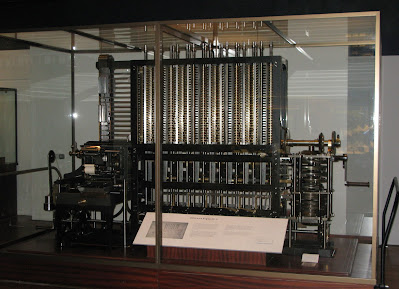Abacus
Abacus was discovered by the Mesopotamians in around 3000 BC. An abacus consistedof beads on movable rods divided into two parts. The addition and multiplication of
numbers were done by using an abacus. Today Abacus is used for young children to learn calculations.
Abacus
Napier’s Logs and Bones
The idea of a logarithm was developed by John Napier in 1617. He invents a set of
numbering rods known as Napier’s Bones through which both multiplication and
division could be performed. These were numbered rods that could perform
multiplication of any number by a number in the range of 2-9.
numbering rods known as Napier’s Bones through which both multiplication and
division could be performed. These were numbered rods that could perform
multiplication of any number by a number in the range of 2-9.
Napier’s Logs and Bones
Pascaline
Pascaline
Leibnitz’s Calculator
In 1673 Gottfried Leibnitz, a German mathematician extended the capabilities of the adding machine invented by Pascal to perform multiplication and division as well.Jacquard’s Loom
In order to make the cotton-weaving process automatic, Joseph Jacquard devised punch cards and used them to control looms in 1801. The entire operation was under a program’s control. Through this historic invention, the concept of storing and retrieving information started.Difference Engine and Analytical Engine
Charles Babbage, an English mathematician developed a machine called Difference Engine in 1822 which could calculate various mathematical functions, do a polynomial evaluation, and could also solve differential equations.Difference engine
Thereafter in 1833, he designed the Analytical Engine which later on proved to be the basis of modern computer. This machine could perform all four arithmetic
operations as well as comparison. It included the concept of the central processor, memory storage, and input-output devices. Even the stored information could be modified.
operations as well as comparison. It included the concept of the central processor, memory storage, and input-output devices. Even the stored information could be modified.
Both these great inventions earned him the title of ‘Father of Modern Computers’.
Mark 1
In 1944 Prof Howard Aiken in collaboration with IBM constructed an electromechanical computer named Mark 1 which could multiply two 10 digit numbers in 5 seconds. This machine was based on the concept of Babbage’s Analytical engine.In 1945, Dr. John Von Neumann proposed the concept of a stored-program computer. As per this concept, the program and data could be stored in the same memory unit.

















0 Comments:
Post a Comment
If you have any queries or suggestions, please let me know!